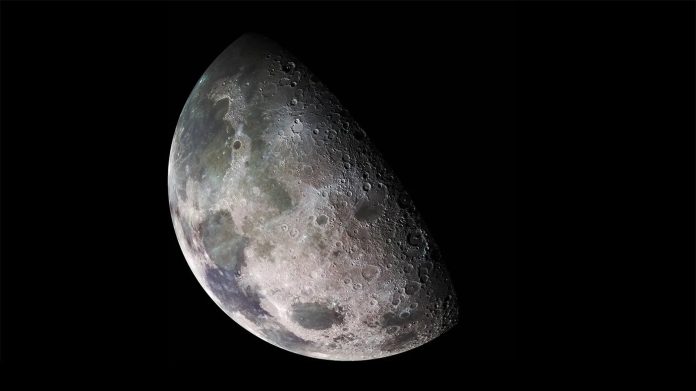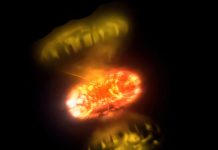
The moon’s atmosphere is so thin that we only discovered it in 1971—after astronauts had already been there.
Ever since, scientists have been puzzling about how it got there.
A team of scientists from the University of Chicago and MIT, however, may have solved the decades-old mystery.
By analyzing samples of lunar soil from five different Apollo missions, they found evidence the moon’s atmosphere is created primarily by repeated impacts from small meteorites that kick up dust from the surface.
“According to our analysis, at least 70% of the lunar atmosphere is created by these meteorite impacts,” said study author Nicole Nie, PhD’19, now an assistant professor with MIT.
“A much smaller percentage is created by the solar wind abrasion of the surface.”
“It turns out the answer to this longstanding question was right in front of us—preserved in lunar soil brought back to Earth by the Apollo missions,” said study author Nicolas Dauphas, professor of geophysical sciences at the University of Chicago.
Causes and culprits
The lunar atmosphere is not at all like you might picture based on Earth’s.
It’s much too thin to help humans breathe; it’s little more than a haze of atoms that hang at a distance from the lunar surface. (Earth’s thick, oxygen-rich atmosphere remains the envy of the solar system.)
These atoms don’t stay for very long; they are continuously either dropping back down to the moon’s surface or lost to outer space, so they must be continuously replenished from somewhere.
Previous attempts to track where these atoms came from had inconclusive results. Two major hypotheses included meteor showers—the moon is constantly being hit by rocks that kick up dust—and the solar wind, a stream of high-energy particles constantly blowing off the surface of the sun that also collide with the moon’s surface and send dust flying.
NASA’s Lunar Atmosphere and Dust Environment Explorer (LADEE) orbited the moon in 2013 and recorded spikes in the atmosphere when a meteor shower hit the moon, and dips when the moon was in the Earth’s shadow and protected from the solar wind. But LADEE could not tell definitively which was the major contributor.
Instead of trying to measure the lunar atmosphere directly, Nie and Dauphas suspected an answer might lie in the soil samples brought back by Apollo missions, which represent the residue of millions of years of atoms gradually being lost to the atmosphere and outer space.
The key was looking at two elements in the soil: potassium and rubidium. Elements naturally come in different variations, known as isotopes—some atoms are very slightly heavier than others. Meteor impacts and solar wind affect these atom variants differently.
For example, the solar wind is more energetic, and it flings off more of the lighter isotopes to space than meteorite strikes do. Over time, the difference in atom variants becomes noticeable.
Decades ago, the techniques to distinguish between these isotopes did not exist, but now, by very carefully counting the proportions of isotopes, the scientists could see patterns. “It’s actually quite a clear difference, once you are able to count them,” Nie said.
“Lunar soils show distinct isotope patterns compared to other lunar rocks, due to meteorite impacts and solar wind bombardment, allowing us to determine which process supplied more atoms into the atmosphere.”
They tested 10 samples of lunar soil, taken from Apollo missions that landed at different locations around the moon. The results suggested that much more of the atmosphere is due to meteor showers than to the solar wind—the ratio appears to be at least 70% to 30%.
‘An exciting time’
Understanding space weather is important, Nie explained: “If humans want to move to different planetary bodies someday, we will have to understand what’s going on at the surface to be able to prepare,” she said. “Each planetary body is different, and the more we understand about these processes, the more complete picture we’ll have.”
The scientists said the study is an example of how important it is to design missions that bring back samples from the moon and other planets for to analyze in the laboratory, which can answer questions that would be impossible to solve based solely on data beamed back from spacecraft.
“We anticipate that this study is going to be a significant foundation on which further studies can be done on samples returned from the lunar surface by the Chang’E and Artemis missions,” said Dauphas. “It is an exciting time to be working on the moon.”
Source: University of Chicago.



